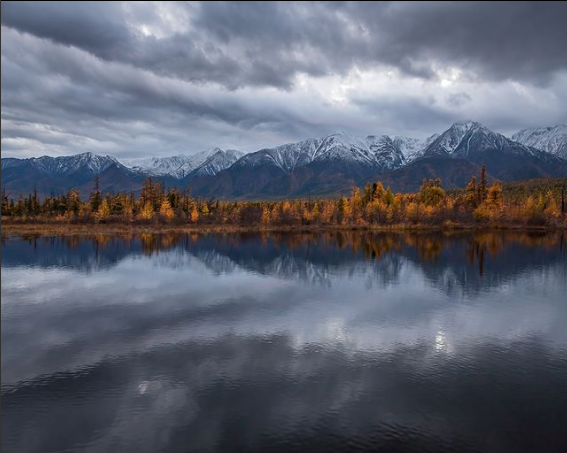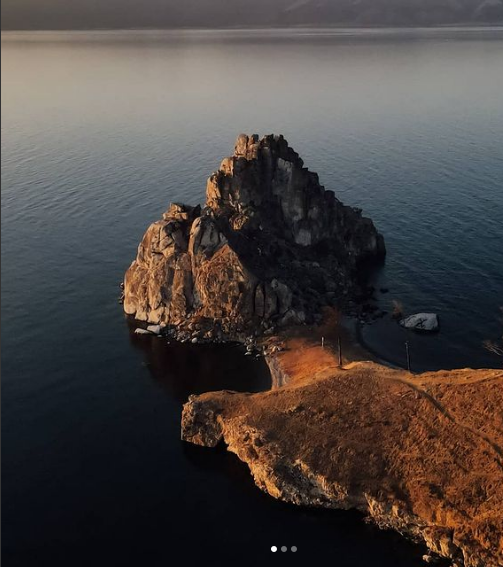We invite you to learn interesting facts about the deepest lake in the world. Put on your bathing suit and dive into this article on ‘What is the Deepest Lake in the World?’.
Lake Baikal (Russia) is the deepest lake in the world. Lake Baikal in Siberia is the deepest lake globally and the biggest freshwater lake, holding more than 20% of the world’s unfrozen freshwater. It is also the world’s oldest freshwater lake, dating back 20 million to 25 million years.
Like the other lakes on this list, Baikal is home to a wide variety of species that are not found anywhere else. The Baikal seal is one of the most unique since it is the world’s only freshwater seal species.
Lake Baikal: World’s Largest, Deepest Lake

When Lake Baikal is full of melting ice from the Siberian highlands in the summer, it is occasionally possible to see more than 130 feet (39 m) down. Moreover, Lake Baikal is the world’s biggest freshwater lake (by volume) and the deepest lake. It is crescent-shaped and located in Russia’s southern Siberia region.
Lake Baikal is the world’s oldest lake. It is home to between 1,700 and 1,800 indigenous plant and animal species. In addition, it also stores 20% of the world’s freshwater.
What is the Deepest Lake in the World?-Let’s See Some Numbers.
Water volume: 5,521 cubic miles (23,013 cubic kilometers). According to Geology.com, this amount is similar to the combined volume of all five North American Great Lakes. The maximum depth is 5,354 feet (1,632 meters). According to Smithsonian magazine, its lowest point is more than 4,000 feet (1,219 m) below sea level. The Smithsonian magazine, the average depth is 2,442 feet (744 m).
According to Smithsonian magazine, the surface area is 12,248 square miles (31,722 square kilometers). Moreover, according to Geology.com, this region ranks sixth in the globe in terms of surface area.
According to Lake Baikal.org, the length is 397 miles (640 km). According to Baikal World Web, the maximum width is 49 miles (79.5 km), and the average width is 29 miles (47 km). Finally, according to Baikal World Web, the minimum width is 16 miles (25 kilometers). According to Lake Baikal.org, the coastline spans 1,300 miles (2,100 kilometers).
Where Can We Find Lake Baikal?-What is the Deepest Lake in the World
Lake Baikal lies in south-central Russia, close to the Mongolian border. Irkutsk is the nearest major city. Lake Baikal has always held a special place in the Russian imagination. It embodies Russia’s untainted beauty and is frequently referred to as the Sacred Sea. According to Baikal Nature, Lake Baikal is fundamental to many local creation tales and appears across Russian folklore.
According to the Siberian Times, Lake Baikal receives more than 500,000 people each year. Next, according to LakeBaikal.org, despite being in southern Siberia, the regions around Lake Baikal are often warmer than the rest of the area because vast amounts of water act as a moderating effect.
Lake Baikal features

According to Lake Baikal.org, there are 27 largely deserted islands in Lake Baikal. The longest is Olkhon, which is 45 miles (72 kilometers) long and has communities. There are around 1,500 individuals that reside there.
About 300 streams and rivers flow into Lake Baikal, but the Angara River is the only outlet. It discharges around 60 cubic kilometers (15.8 trillion gallons) of water per year into the Yenisei River. The water eventually makes its way to the Arctic Ocean.
The Selenga River is the main source of water into Lake Baikal. It supplies about half of the lake’s water, flowing north from Mongolia. The Selenga Delta, like Lake Baikal, is worldwide known for its biodiversity and significance.
Lake Baikal is regarded as one of the world’s purest bodies of water. When the lake is full of melting ice from the Siberian highlands during the summer, one can see more than 130 feet (39 m) down. The lake’s amazing cleanliness is due to the purity of the melting ice, plankton that consumes floating trash, and a lack of mineral salts.
Are there Threats in Lake Baikal?-What is the Deepest Lake in the World
Lake Baikal has faced rising environmental problems as Russia and Mongolia have become more industrialized and expanded tourism. Furthermore, climate change is endangering its environment. Temperatures in the water and the amount of ice on the ground have already changed.
The most serious concern, she believes, is the “great problem with algae on the lake and the government’s inability to devise an appropriate solution to it.” Massive green algal blooms plague bodies of water like the Great Lakes, but Russian scientists thought that Lake Baikal was too large to be impacted for a long time. However, according to National Geo, Spirogyra algae blooms have formed on the lake’s bottom since 2008.
Welcome to the Deepest Lake in the World
Lake Baikal in Russia has the world’s deepest lake in terms of both maximum and mean depth. Itholds 20% of theworld’sfreshwater.
- Lake Baikal is the world’s biggest freshwater lake in terms of volume (23,600km3), containing 20% of the world’s freshwater.
- It is the world’s deepest freshwater lake, reaching 1,637m; the average depth is 758m.
- It is 636 kilometers long and 81 kilometers broad, with a surface area of 31,494 kilometers.
- The lake is thought to be 25 million years old, making it one of the oldest geological history.
- More than 330 rivers enter the lake, but only one, the Angara, exits.
- Baikal is home to about 2,500 plant and animal species, two-thirds of which are unique to the globe.
Baikal’s location is in a deep structural valley surrounded by mountains that rise more than 6,600 feet (2,000 meters) above the lake’s surface. The geological layers on the lake’s floor might be as thick as 20,000 feet (6,100 meters). Hot mineral springs are in the area due to cracks in the Earth’s crust. Severe earthquakes occur occasionally; in 1862, a quake submerged over 77 square miles (200 square kilometers) of the northern Selenga delta, forming Proval Bay in Baikal.
Finally, there are several mineral springs in Goryachinsk, and people come for the medicinal powers of the waters. Because its wastes polluted the water, a pulp and paper factory erected on Lake Baikal’s southern coast in 1966 generated considerable environmental concerns from Soviet scientists and authors. The Soviet government issued a directive to safeguard the lake from harmful emissions in 1971.
Recommended Reads
- https://thetravelvirgin.com/lake-hillier-in-australia-all-you-need-to-know/
- https://thetravelvirgin.com/top-50-hiking-trails-in-the-usa-2021/
- https://thetravelvirgin.com/hiking-to-burney-falls/
- https://thetravelvirgin.com/hiking-in-red-river-gorge-your-guide-to-the-10-best-trails/
- https://thetravelvirgin.com/travel-activities/
- https://thetravelvirgin.com/tourist-city-in-mexico-the-best-revealed/
- https://thetravelvirgin.com/forget-mount-everest-top-10-mountain-peaks-to-summit-2021/
Trusted Tours and Attractions
- Boston Tour and Attraction Discount Tickets
- San Diego Tour and Attraction Discount Tickets
- Travel Gift Certificate


